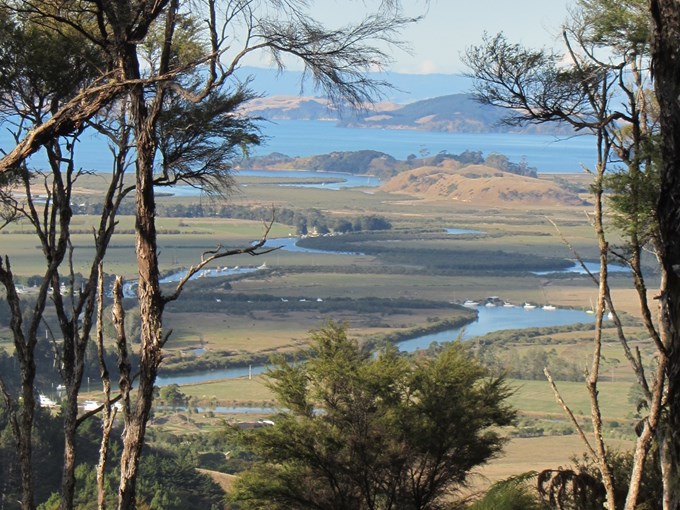As climate change brings about a rise in extreme weather events and Auckland continues to develop and grow, the pressure on water supply, management of stormwater and wastewater networks, and our region's water quality has come more sharply into focus.
At the creation of the amalgamated Auckland Council in 2010, Watercare was confirmed as the organisation to manage the drinking water, wastewater and water infrastructure. Auckland Council was given responsibility for the provision, operation, and maintenance of the public stormwater network and water quality.
Auckland Mayor Phil Goff says the regionwide approach to Auckland’s water management enabled the council to plan more effectively for the long term and to take advantage of the size and efficiencies of scale the super city afforded.
“Although we are still catching up on decades of underinvestment, we are making significant progress in the management of Auckland’s water,” he says.
“Projects like the $1.2 billion Central Interceptor will reduce wastewater overflows in the central isthmus, dramatically improving the water quality of our harbours and beaches.
“The water quality targeted rate introduced in 2018 committed an additional $452 million to deliver cleaner harbours, beaches, and streams and will bring forward by 20 years the necessary work to improve our water quality.”
Deputy Mayor Bill Cashmore says the unified council has improved water and wastewater provisions across the region.
“For example, prior to amalgamation, Pukekohe’s water was the worst in the city, and its wastewater treatment was no better,” he says.
“A substantial investment of over $116 million from Watercare has resolved the issue. This was never going to be affordable under the legacy council system. Investment in the Franklin ward has far outstripped what the Franklin District Council could ever have afforded.
“There is still much to do and challenges to face but with smart collaboration and effective delivery, much more will be achieved.”
Here are some of the tangible ways Auckland Council and Watercare are delivering on their objectives:
|
Date |
Project |
|
March 2011 |
Hobson Bay completed |
|
June 2015 |
$161m Franklin water supply network upgrade |
|
April 2018 |
$100m Takanini integrated stormwater solution |
|
June 2018 |
$141m bio nutrient removal facility opened in Māngere |
|
December 2018 |
$25m Warkworth treatment plant |
|
April 2019 |
$33m Daldy Street outfall upgrade |
|
June 2019 |
$24m Freemans Bay stormwater network separation |
|
January 2020 |
$38m St Marys Bay water quality improvement |
|
June 2020 |
$400m 32km Hunua 4 watermain tunnel from Manukau to city |
Read more about Watercare projects here.
A costly business
Water is a significant part of Auckland Council’s operations – in the 2020/2021 financial year, the council group will spend $1.16 billion delivering water services.
In the last 10 years, the council alone has increased its investment in stormwater infrastructure from $39 million in 2011 to $159 million in 2020, an increase of over 300 per cent.
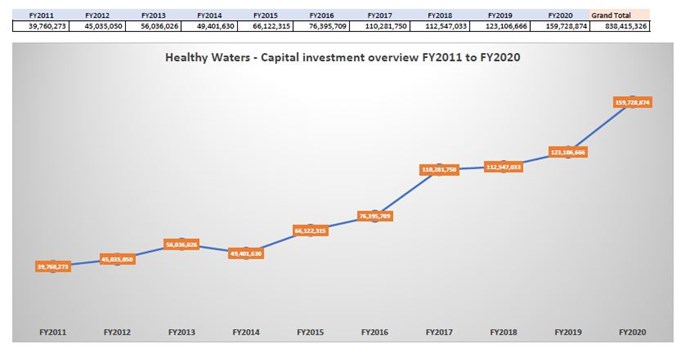
Click the image above for a larger version
Watercare has invested $2.7 billion to build water and wastewater assets since 2010, spent $1.8 billion to maintain those assets and budgeted another $4.8 billion on water and wastewater projects over the next eight years and a further $5.2 billion in the following 10 years
The priorities
The aim of the integration of water, stormwater and wastewater services delivery in 2010 was to provide a better service to customers, achieve efficiency gains through economies of scale and enable integrated regional planning.
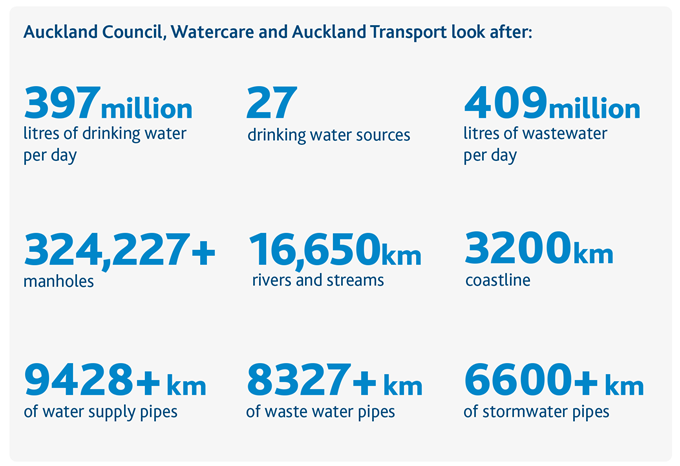
2019/2020 figures
Auckland Council and its CCOs manage and maintain an extensive network of assets while focussing on five key areas:
- meeting the daily and future water needs of a growing population by providing ‘Aa’ grade water supply
- providing infrastructure to meet growth and development and ensure Auckland is a resilient water sensitive city
- preparing communities for changes in our climate as Auckland is vulnerable to multiple water-related natural hazards such as storms, flooding, coastal sea level rise and inundation, erosion and drought
- protecting and enhancing the environment and ecosystems
- water quality - taking care of waterways and enhancing te mauri o te wai.
Sustainability and water-sensitive design
One of the biggest changes brought about in the environmental space is the transformational shift away from relying solely on hard engineering solutions towards greener infrastructure and applying innovative water-sensitive design to achieve optimal environmental, social, and economic outcomes.
“The physical infrastructure and utilities of the legacy councils had been problematic for decades. The new entity finally gave Auckland Council an overview of its collective assets, the opportunity to own the problems and work across the region to accelerate work programmes to deliver better water outcomes for the city,” Craig Mcilroy, General Manager Healthy Waters says.
In 2014 the La Rosa Reserve in Green Bay was the first project to embrace the new philosophy where traditional buried pipes were replaced by 'daylighting' of the stream to allow water to flow naturally and habitats to be restored.
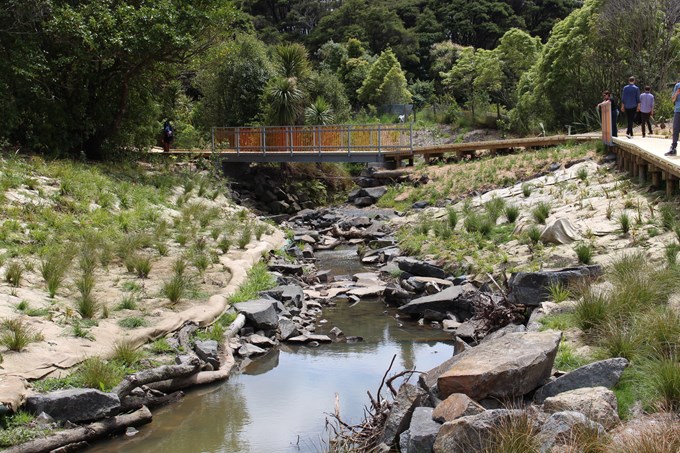
“The project quickly demonstrated how bioengineering could reconnect a community with their local stream,” Councillor Tracy Mulholland says.
“It’s now an asset to be enjoyed by schools as an outdoor classroom and where groups come together for planting days. They’ve taken ownership of the ongoing care of the stream.”
The $25m restoration of the Te Auaunga/Oakley Creek project in Mt Roskill resolved a long-standing flooding problem and unlocked the area for redevelopment to help improve water quality. The diverse local community helped shape the new amenity, contributing to the environmental, cultural and economic success of the project.
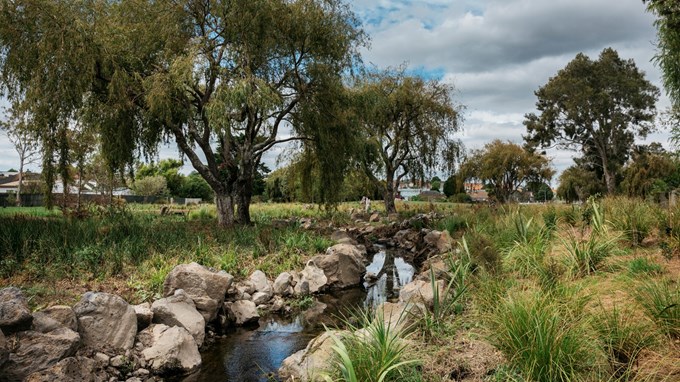
This new water sensitive design thinking is evident further south in the large-scale three-kilometre Awakeri Wetlands project in Takanini. $100 million is being spent to unlock what was once a flood-prone, flat piece of peat for housing development as part of the transformation of the area into an eco-friendly urban community.
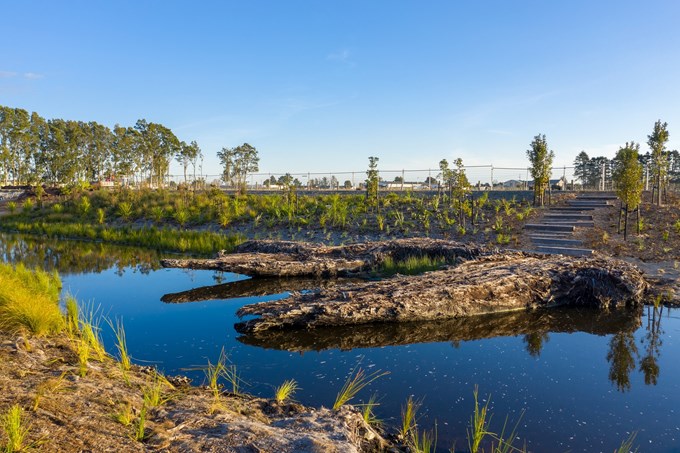
Safeswim
Water quality is a key concern for Aucklanders.
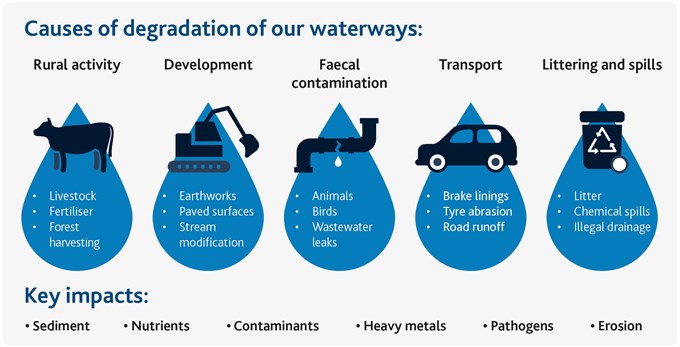
The introduction of Safeswim’s modelling and forecasting tool has brought real-time water quality information to Aucklanders' favourite swimming spots.
This information, made publicly available, was instrumental to Aucklanders supporting the 2018 targeted rate for water quality.
Visit the Safeswim website for more information.
The future
A council-wide Auckland Water Strategy is currently under development to take the city into the next 50 years. It will set the direction for how the council group will invest to protect and enhance the te mauri o te wai vision.
Auckland Council is committed to delivering water services for Aucklanders using best practice asset management to efficiently and prudently ensure our public receives the best value for money possible as we have over the first decade.

